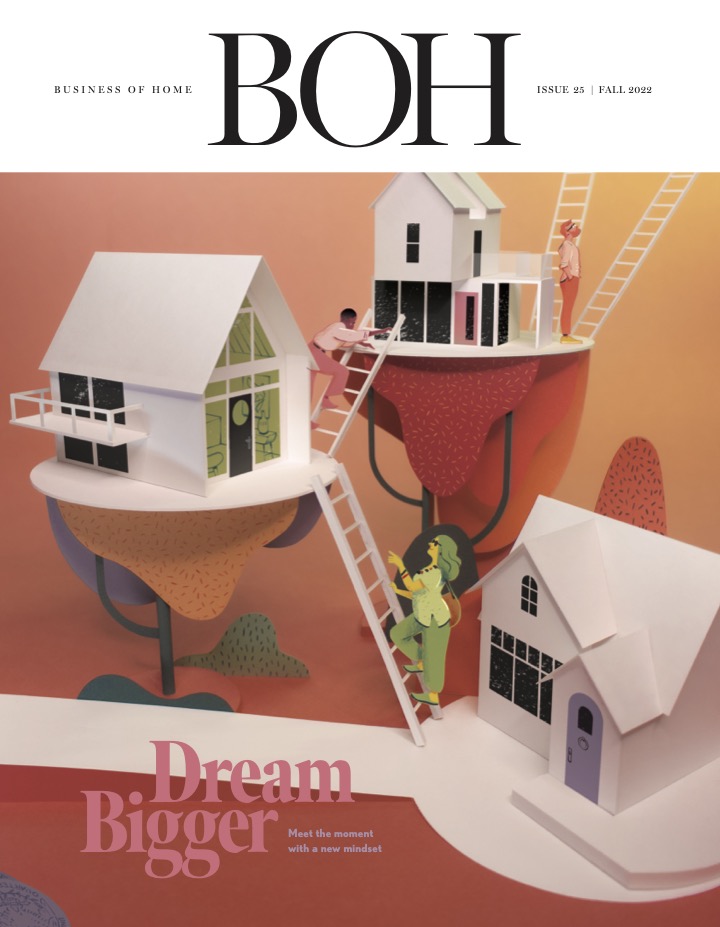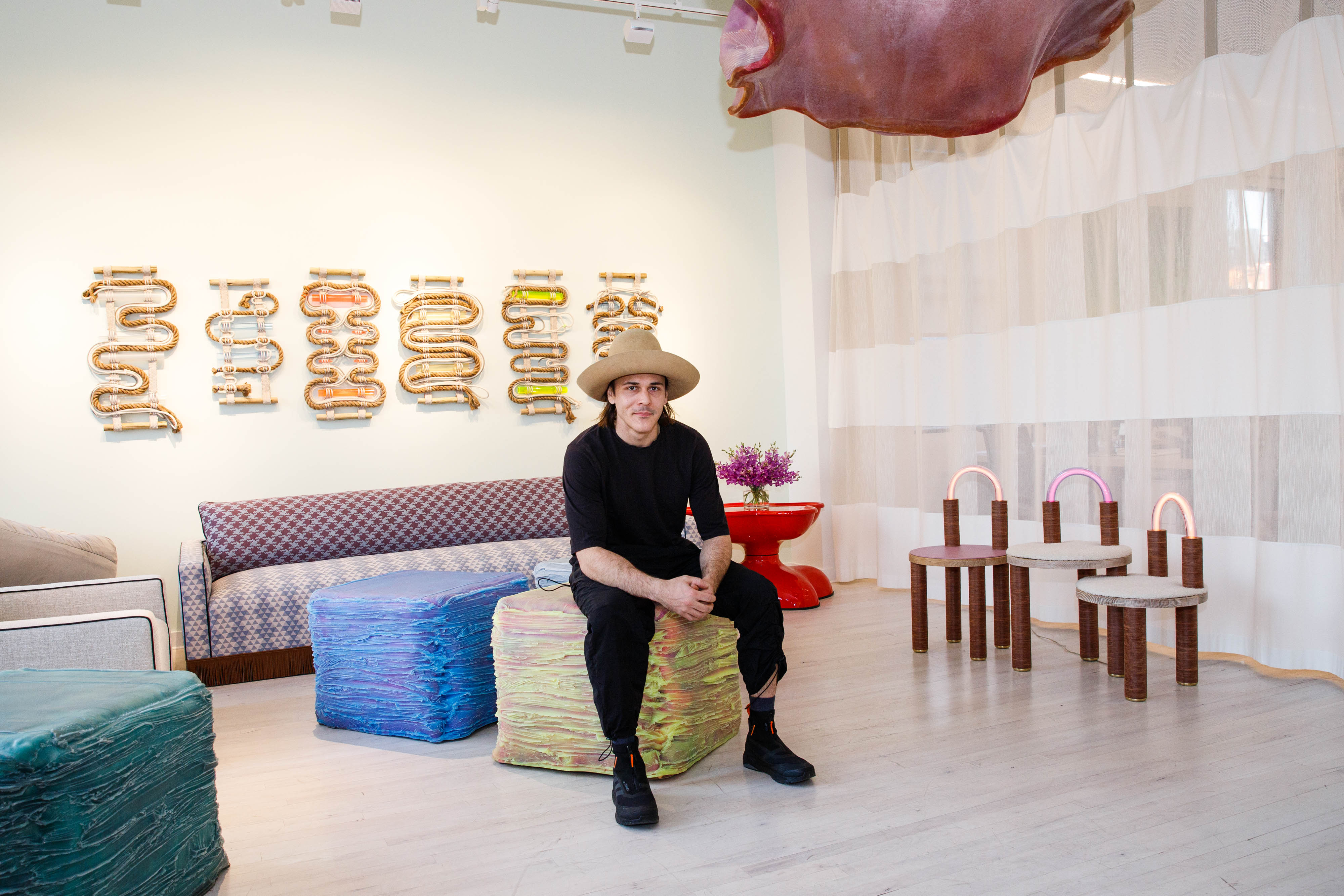You can learn a lot from one person’s trash bin. Bring more of them together, and a different image starts to form. Philadelphia-based artist Nick Missel has come to believe that our waste defines us, an ethos that lies at the heart of his furniture designs: “Instead of a collection of pixels, bales [of trash] are a composite of human existence, of memories,” says Missel.
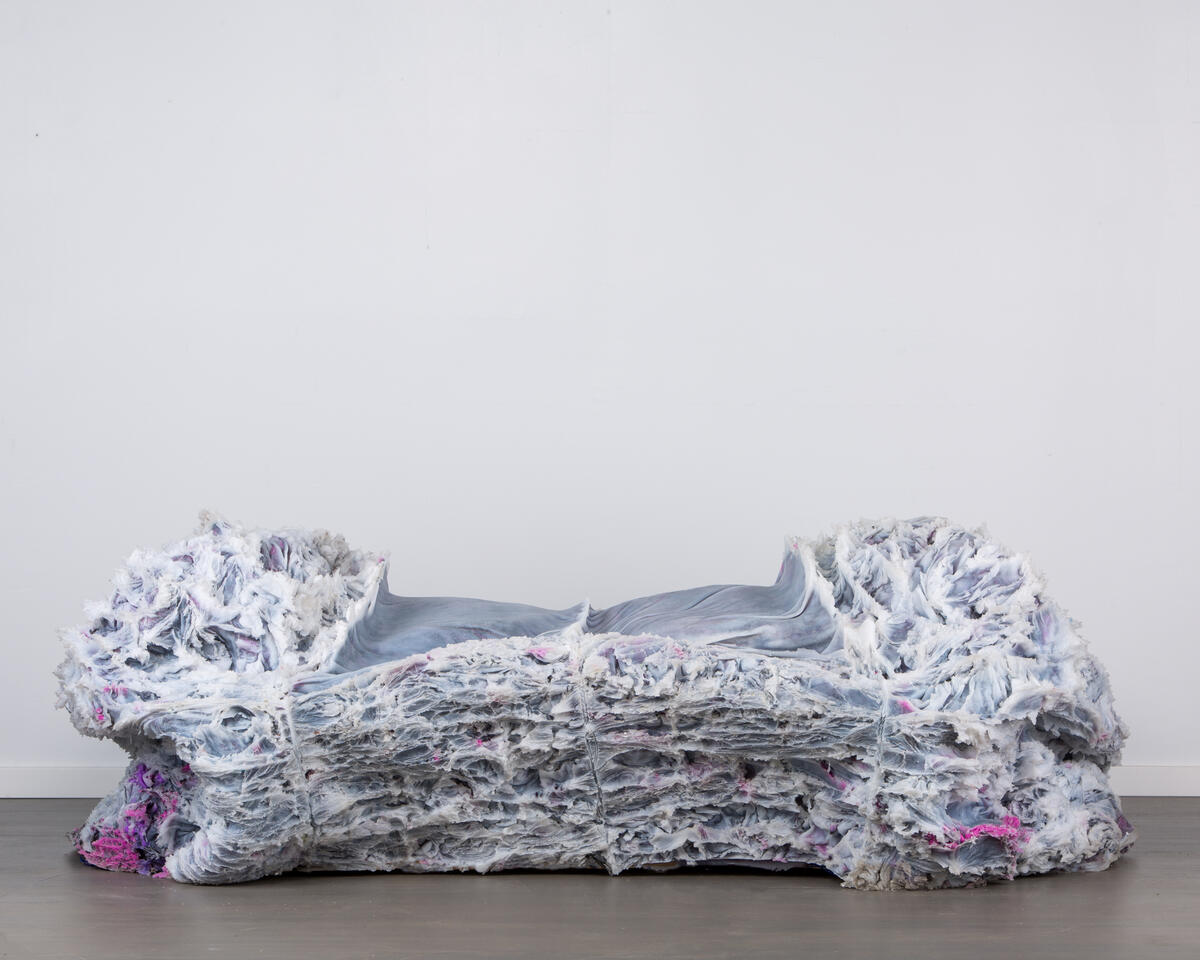
Growing up in St. Louis, Missel was always interested in painting and photography, but at the advice of the teaching staff at the Kansas City Art Institute, he found himself in the sculpture department. In the 3D art world, Missel took issue with the look-but-don’t-touch attitude that he’d come to perceive, which led him straight to furniture design. “The separation of art always bothered me,” he says. “I didn’t understand it. Sculpture is something that is so bodily. You should be interacting with it.” That’s when Missel began exploring furniture design, making a piece or two for himself but still seeing it as a vehicle for developing sculptural processes, not a career path.
From Kansas City, Missel moved on to the Rhode Island School of Design to pursue an MFA in sculpture. After graduating from RISD in 2016, he continued studying at the Skowhegan School of Painting & Sculpture in Skowhegan, Maine, where car trouble led to an artistic epiphany of sorts. “The engine of my 1986 Chevy truck blew up while I was [in Maine], and I had to get a new engine,” he says. “It was a classic car, American muscle. There was something nostalgic there and interesting about bringing back this dead heart of America.”
Missel hurried to make a resin cast of the broken-down engine, but in his rush, he didn’t wait long enough for the silicon to set. Instead of scrapping the project, he curiously peeled the silicon off, expecting disaster—but what he found exceeded his highest hopes. “I [realized it] was way more interesting than I thought,” says Missel. “And it was saying more of what I was trying to say than what I was thinking about doing.” The warped piece seemed to be both alive and dying, much like the sense of “Americana” that the Chevy’s engine evoked. Talk about lemonade.
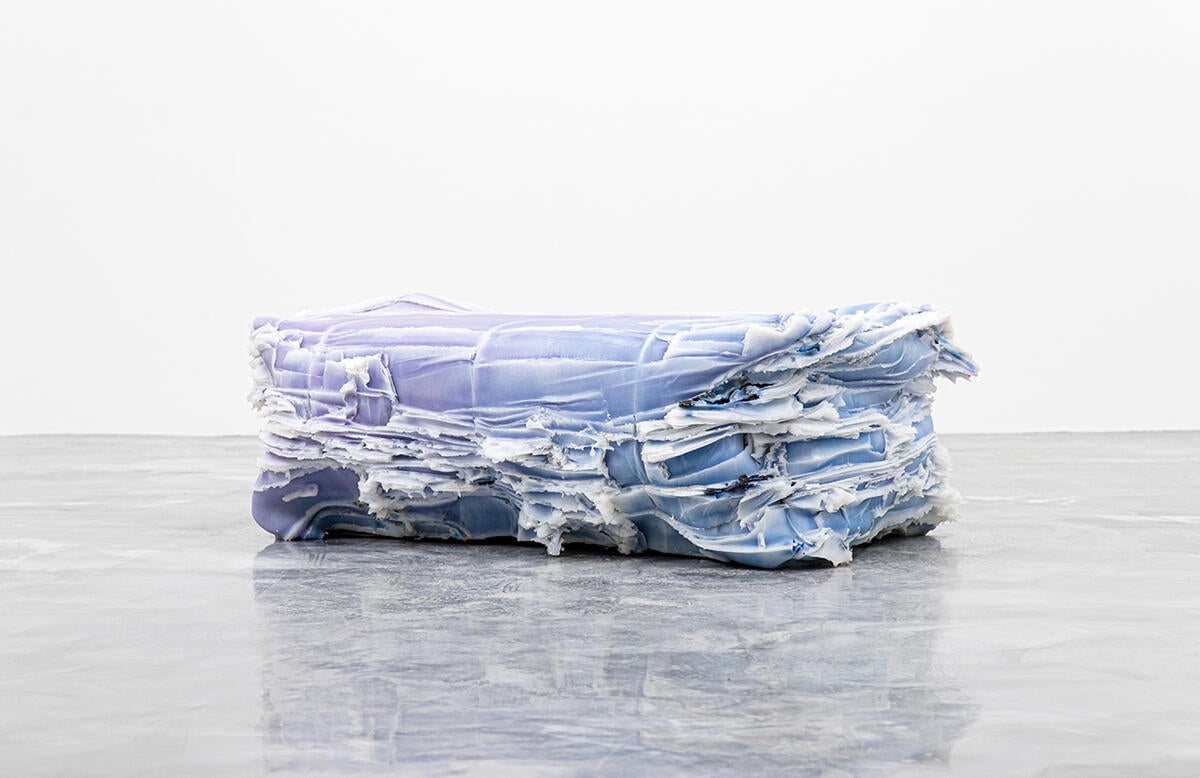
From there, Missel moved to New York and made his way into its design scene, working with furniture names like Fernando Mastrangelo, Rossana Orlandi and Facture Studio. His break came when he submitted a silicone piece to In Good Company, a design show co-curated by Mastrangelo and Orlandi. Missel won Best in Show for “Negative Bench,” a feathered fanfare of laminations. The piece drew the attention of interior designers, including New York–based Elena Frampton, who for the past two years has been placing Missel’s work in projects that went on to be published in Galerie, which accelerated his career.
On July 16, national sales training and business development expert Alison Mullins will help you build confidence and clarity in your sales process. Click here to learn more and remember, workshops are free for BOH Insiders
We want to hear your thoughts! Take BOH’s annual reader survey, an 8-minute questionnaire that helps us get to know you better and will allow us to tailor our storytelling to your business needs.
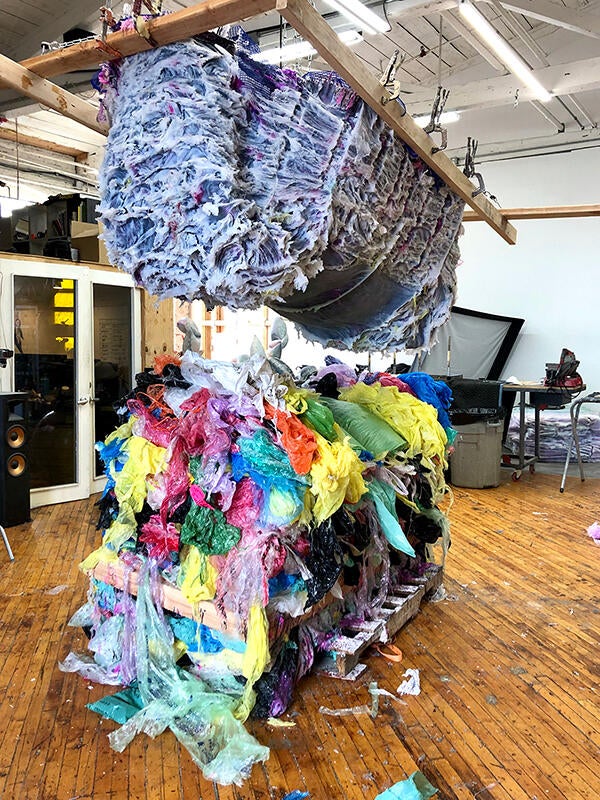
Most of the commissions Missel receives come directly from interior designers—foggy, textured, otherworldly pieces made from an original cast of cardboard or plastic stacks. To get there, hours upon hours of work start with preparing the stack for casting, sealing every crevice with clay or glue before treating it with resin, creating a rubber mold and then recasting it using a combination of fiberglass and resin. Then comes what Missel calls “the alchemy of the studio.” He covers the mother mold with silicone rubber, layering additional pigmented rubber from within to give it its core color. The piece is allowed to set before Missel peels the “skin” off to produce the exterior of his pieces. The treatment Missel uses is his trade secret, giving a nonsticky finish to his designs. And what’s surprising about the furniture is that it’s squishy—really squishy. The silicon shells are filled with expandable memory foam that, depending on the size of the piece, can provide up to six inches of give. Once finished and cleaned, each one exudes a soft, colorful glow.
Missel’s furniture has a lot to say, but it doesn’t sacrifice utility. The surprisingly comfortable designs are made from postconsumer waste, and while his pieces may not initially strike an earthy chord, he hopes each provokes the question: What are we doing with our waste? The sculptures objectify and immortalize consumption—itself a fleeting pursuit of gratification. In that, Missel’s photographic roots found their expression in 3D furniture-as-art. “If I was just playing around with form and material, I would call myself a furniture designer,” he says. “But I think there’s more to it—I hope that [each piece] is surprising, exciting and a unique experience that you can’t really find [elsewhere].”
If you want to learn more about Nick Missel, visit his website or follow him on Instagram.
Homepage image: Nick Missel seated on one of his “Cube” stools | Joshua McHugh Photography














